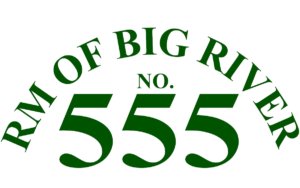Local Improvement District #974
The Northern Areas Branch of the Department of Municipal Affairs had an office in Big River since the 1930’s. The office of the Local Improvement District #974 was responsible for administration of the area, taxes, land mapping, and roads. Business was initially conducted by agents travelling from Prince Albert, until the Reverend Smith became the first local Inspector and an office was opened in town. This building still stands today at 107 3 Ave N.
Also known as a Relief Officer, the duties of the Inspector including budgeting and spending for the area, hauling supplies to service road camps, assisting with emergencies and road accidents, and providing general medical attention and transport to the city for medical emergencies as needed.
As economics improved in Big River during the war years, the Local Improvement District provided road building programs, and built a machine shop in the Ladder Lake area. Many district roads were built, including the road to Green Lake. The Local Improvement District came to an end when the Rural Municipality replaced it in 1977.
The Rural Municipality of Big River No. 555
In 1883, the federal government gave the legislative council of the North West Territories the authority to make laws respecting local government. Those areas that did not form municipalities were organized as Local Improvement Districts (LID’s), all with the purpose of establishing roads and protecting against prairie fires. When Saskatchewan became a province in 1905, the existing rural municipalities and Local Improvement Districts formed the Saskatchewan Local Improvement Districts Association with the intent of ensuring the concerns of the people would be heard by senior levels of government.
Big River phased out its Local Improvement District in favor of a Rural Municipality, and on September 28, 1977 the first election was held. P.J. Mallaghan, the Inspector at the time, declared the first election results as follows:
Reeve: Gerald Horner
Councillors:
Division 1: Abe Bergen
Division 2: William Donald
Division 3: Jesse Klassen
Division 4: Albert J. Swanson
The Inaugural Meeting of the RM of Big River No. 555 was held on October 4, 1977 where Albert Swanson was appointed Deputy Reeve, Council passed a motion to bank with Canadian Imperial Bank of Commerce, and Walter Wicinski was appointed as the Member at Large to the Big River Planning Commission. Mrs. Ivy Johnson acted as secretary, and Richard Sullivan was hired as the RM’s first equipment operator at a rate of $6.50 per hour.
Big River has largely been known as a mill town since the early 1900’s, with early settlers drawn to the area’s promise of employment at the Big River Lumber Company. The railway built in 1910 drew a large population to the area during a time when war was prevalent and money was scarce for many families. Newspaper ads as far as eastern Canada drew a massive migration to the area, and the population grew to an estimated 4,000 people.
The lumber industry in Big River suffered disastrous fires each of 1913, 1919, and 1969, and while small private outfits still operated in the area, each fire causing a dwindling of population in the area. It wasn’t until the the late 1970’s when a successful sawmill was finally established in Bodmin that the area’s population began to come back.
Growth in the area was fueled by this new job stability, and development boomed. The newly established Rural Municipality was introduced at the same time the modern area of farming and agriculture were beginning, and farmers in the area began producing larger crops of canola, barley, oats, and wheat. Livestock such as cattle, hogs, elk, and bison were becoming common, and the area even began to produce cheese and honey. The newly established RM was tasked with managing the fast-paced road construction and land clearing in the area, and the first Zoning Bylaw was introduced in 1981. The first Council worked to establish highways, emergency services, and recreational facilities in the area which the community still reaps the benefits of to this day.
 SaskAlert – Public – Current
SaskAlert – Public – Current
